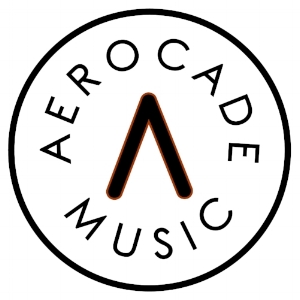"Shim is a superb soloist, her virtuosity seemingly endless."
Thank you Fanfare Magazine for another review for Meerenai Shim's Pheromone!
This article originally appeared in Issue 40:2 (Nov/Dec 2016) of Fanfare Magazine.
PHEROMONE • Meerenai Shim (fl); 1Jacob Abela (pn) • AEROCADE 001 (44:01)
FIELDSTEEL Fractus III: Aerophoneme. G. C. BROWN Huge Blank Canvas Neck Tattoo. O’HALLORAN 1Pencilled Wings. LAUSTSEN 60.8%. SCHANKLER 1Pheromone. M. J. PAYNE Étude for Contrabass Flute and TI83+ Calculator
This is an all-electroacoustic album. The inspiration was actually the first track, Fractus III: Aerophoneme (2011/12) by Eli Fieldsteel for “flute and live electronic sound”. Replete with extended performance techniques for the soloist and electronic sounds that seem primal in origin (the Supercollider software was used). There is also the feeling of great expanses around the ten-minute mark, while to the present writer at least the subsequent effects around eleven-twelve minutes in seem to evoke some sort of post-nuclear wind. Shim is a superb soloist, her virtuosity seemingly endless.
There is virtually no gap between the end of the Fieldsteel and the wonderfully titled Huge Black Canvas Neck Tattoo by Gregory C. Brown (2014). This piece, for alto flute and digital delay (using Ableton Live software) is, despite the images evoked by its title, much more approachable. Tape loops as used by Stockhausen spring to mind as the lines accrue and begin to interact and co-mingle; the very lowest register of this flute is so resonant it comes across as a bass flute, although only alto flute is credited. The busier sections are remarkably effective, as are the whimsical, flight moments elsewhere. The same software is used in Douglas Lausten’s 60.8% for bass flute and electronics (2014). The title refers to the unemployment rate in Greece and the piece is inspired by the hardship encompassing the Greek nation of late. The ghost of rebetiko music underpins the material, while the Greek flavor is unmistakable.
Elusive and soft textured, Emma O’Halloran’s Pencilled Wings, also of 2014, features pianist Jacob Abela (on a Yamaha concert grand). The soft-grained stereo playback audio file that underpins it all creates this relaxing ambience. The piece from which the album gets its name, Pheromone by Isaac Schankler (2014) is for flute (standard and bass), piano and electronics (MAX/MSP). The piano’s contribution is initially very gentle, and beautifully managed here; the piece gradually slows to a meditative space before inviting in frenzy.
Finally, Matthew Joseph Payne’s Etude for contrabass flute and TI83 Plus graphing calculator. Shim records audio directly from the calculator. There is a quite involved story of how the piece came to be a half-step lower and slower than the original because of a memory leak bus destroyed the original calculator part before the composer recorded it. What we really need to know, of course, is that the piece is phenomenal fun. Brief and to the point, it is also wonderfully unique in feel. Somewhat otherwordly, some might feel; others may find it links to computer game “soundtracks” (if so they could be called in those days) of the 1980s.
Colin Clarke

